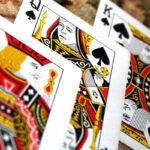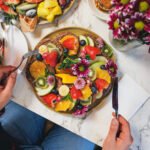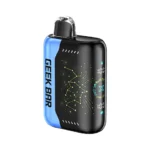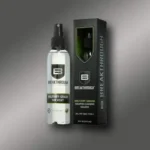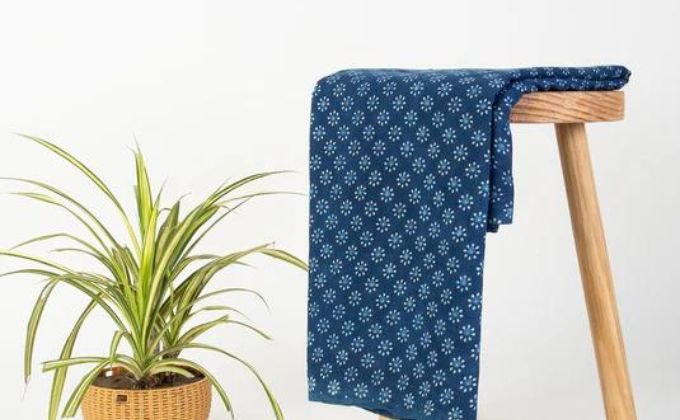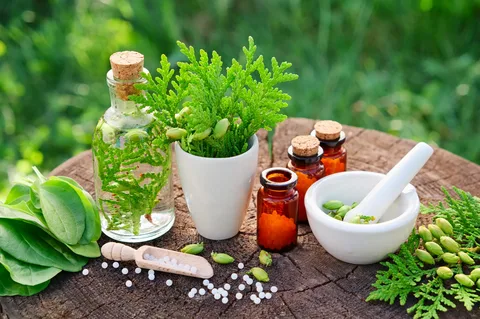Indigo fabric has long held a special place in the world of textiles, not only for its deep, rich blue hues but also for its sustainable and natural origins. Extracted from the leaves of the indigo plant, indigo dye has been used for centuries across different cultures. Its natural, earthy appeal combined with the versatility of indigo fabric makes it a popular choice in both fashion and home décor. In recent years, there has been a growing interest in the use of natural dyes like indigo, as more designers and consumers seek sustainable alternatives to synthetic dyes.
1. The Science Behind Indigo Dye
Indigo is unique among natural dyes in that it doesn’t dissolve in water, requiring a specific chemical process to bond with fabric. This process, known as vat dyeing, involves fermenting the indigo leaves to create indigo dye. When first applied to the fabric, the dye appears greenish-yellow. However, once the fabric is exposed to oxygen, the color oxidizes and transforms into the deep blue shade we associate with indigo fabric.
Historically, indigo dyeing was labor-intensive and required careful attention to detail, as each stage of the process could affect the outcome. The beauty of indigo dyeing lies in its unpredictability; no two dyeing sessions produce the same result, which adds to the fabric’s unique charm.
2. Experiments with Natural Indigo Dye
Experimenting with natural indigo dye has become increasingly popular among artisans, designers, and hobbyists alike. The appeal of working with indigo lies in its vibrant color and the satisfaction of producing sustainable, eco-friendly textiles.
- Dyeing Techniques: One of the most common techniques used with indigo dye is shibori, a Japanese method of tie-dyeing that creates beautiful patterns through folding, twisting, and binding the fabric before immersing it in dye. This technique results in striking, one-of-a-kind designs on indigo fabric, with each pattern varying depending on how the fabric is manipulated.
- Fabric Selection: Different fabrics take on indigo dye in unique ways. While cotton and linen fabrics are typically the most receptive to indigo, experiments with wool, silk, and even synthetic blends can produce interesting effects. Natural fibers, however, tend to absorb the dye better, creating a deeper and more long-lasting blue.
- Layering Dyes: Another experimental approach involves layering indigo dye with other natural dyes to achieve varying shades and tones. For instance, combining indigo with turmeric or madder root can result in greenish or purplish hues, offering endless possibilities for creativity.
3. Results of Natural Indigo Dyeing
Natural indigo dyeing produces a spectrum of shades, from soft, light blues to dark, almost-black hues, depending on the concentration of dye and the number of dips into the vat. The longer the fabric is immersed in the dye, the deeper the color becomes. This flexibility allows artisans to create a wide range of results, from subtle, pastel-like blues to bold, vibrant indigo tones.
One of the fascinating results of working with natural indigo dye is the gradual change in color over time. Indigo fabrics often develop a “fade” as they are worn and washed, similar to how denim ages and softens. This gives the indigo fabric a lived-in, vintage look that is highly sought after in the world of fashion.
4. The Benefits of Using Natural Indigo Dye
There are several reasons why natural indigo dye is preferable to synthetic alternatives:
- Eco-friendly: Natural indigo dye is derived from plants, making it a sustainable option for those looking to reduce their environmental impact. It does not release harmful chemicals into the environment, unlike synthetic dyes.
- Biodegradable: Indigo dye breaks down naturally, unlike synthetic dyes that can linger in the environment for years, causing pollution.
- Skin-friendly: Since it’s made from natural ingredients, indigo dye is gentler on the skin compared to synthetic dyes, which can sometimes irritate.
5. Conclusion: The Timeless Appeal of Indigo Fabric
Indigo fabric remains an enduring favorite in both traditional and modern fashion due to its rich, versatile color and eco-friendly origins. The experiments and results from working with natural indigo dye show that it’s more than just a fabric dye—it’s a canvas for creativity. Whether through shibori techniques or layering with other natural dyes, indigo allows artisans to explore endless design possibilities while embracing sustainable practices.
For those looking to experiment with natural dyes, indigo offers both beauty and tradition in every creation. It’s not just a dye, but a celebration of craftsmanship and nature.




